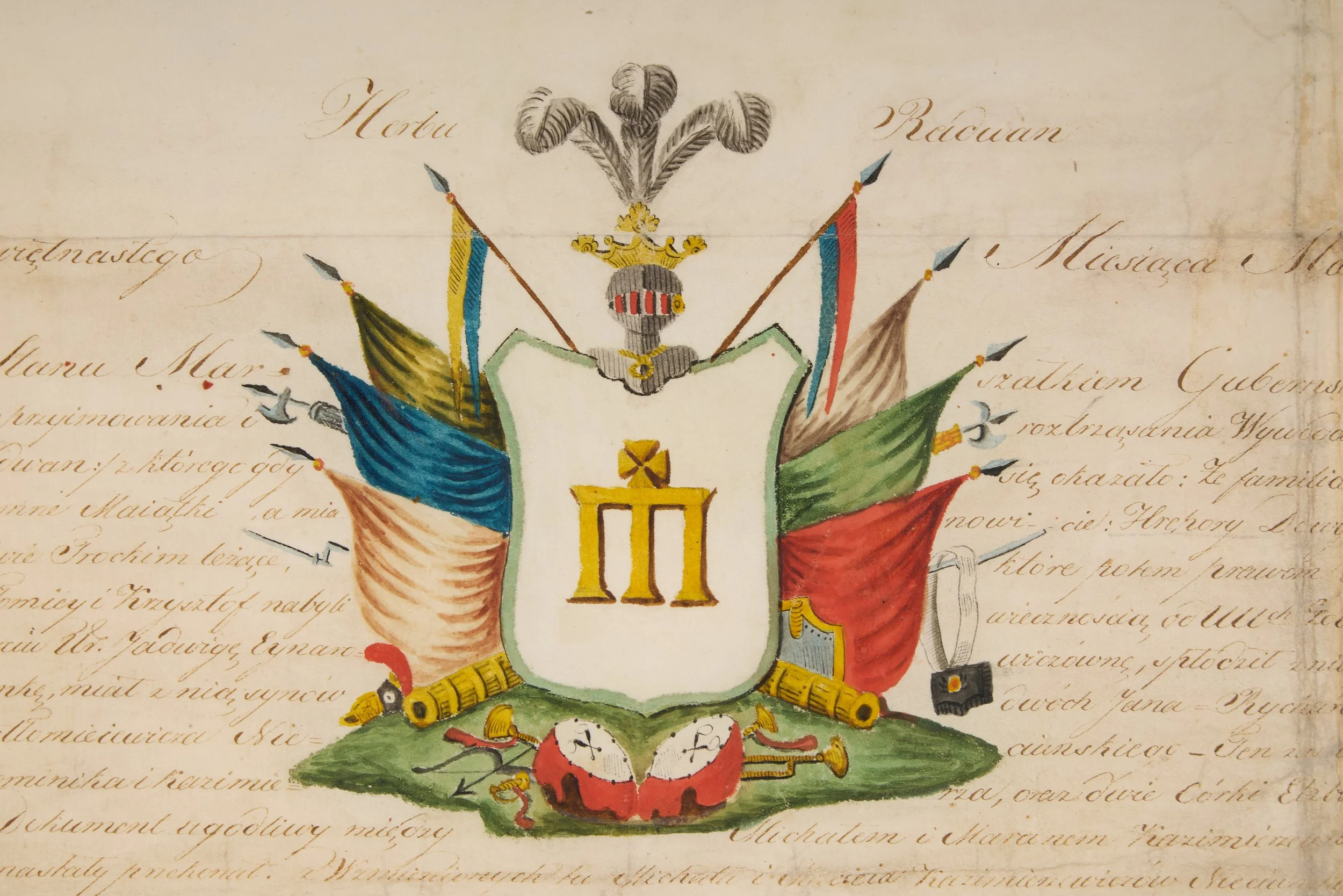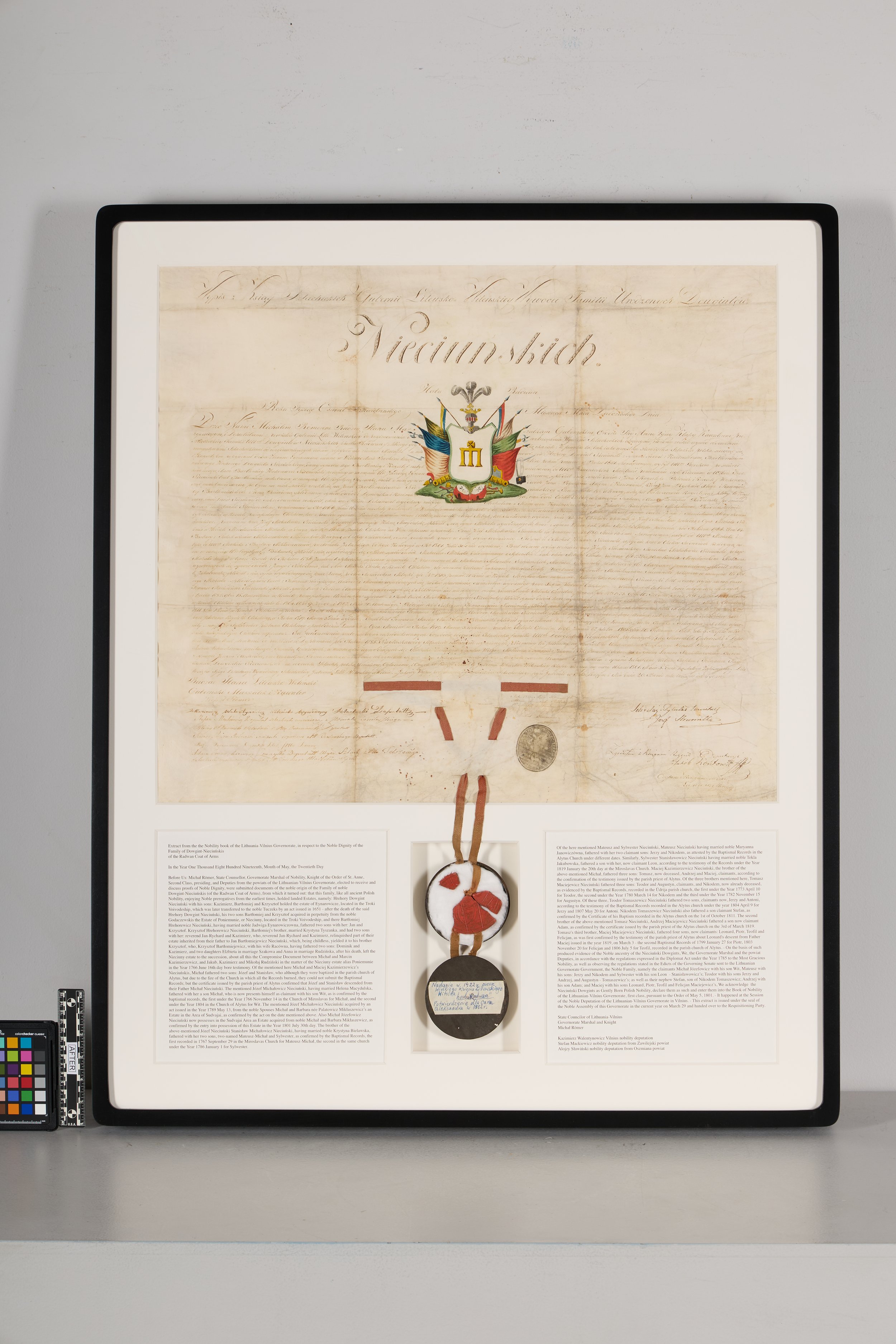Many of the objects that come through our doors are family heirlooms—valued not just for their age, but for what they represent. This piece, consisting of a parchment document, a frayed ribbon, and a sealed metal cannister, was a particularly striking example.
The document prior to conservation.
When it arrived at The Conservation Center, all three components showed signs of age and handling. Year of natural degradation had left the parchment distorted with visible creases, handling dents, and scattered scratches. Tears had formed along its fold lines, and a rust stain marred the lower center of the sheet. Inherent age-related staining and surface grime further obscured its appearance.
The verso of the parchment prior to treatment.
The cannister, covered in a fine layer of particulates, exhibited scattered accretions, minor corrosion, and a faint residue of rust. Inside, fragments of the original wax medallion and three faded ribbons were housed within a slightly yellowed wad of cotton wool. A handwritten label on the back offered a small clue to its provenance, but much of the piece’s story remained hidden—literally and figuratively—under layers of history.
The wax seal and cannister prior to treatment.
Treatment began with thorough photographic documentation. The parchment document and ribbon were gently surface cleaned, then locally humidified and flattened to reduce creases and distortions. Tears were repaired with Japanese tissue and wheat starch paste, and reverse-side support was added to reinforce vulnerable areas. The creases, while characteristic of the document’s journey, were minimized with care to preserve the object’s integrity.
The medallion and inner padding were carefully removed from the cannister. Conservators gently cleaned the metal surface to stabilize it and reduce corrosion byproducts. The wax seal fragments and ribbons were dry dusted, while naturally embedded archival particulates were intentionally preserved. A thin coating of paste wax was applied to the cannister’s surface to help protect against future corrosion, and the bottom was lined with acid-free blotter to cushion the contents. The existing cotton wool was replaced to provide a protective cushion for the wax seal.
The wax seal and cannister after conservation.
To make the piece accessible and display-ready, the document was translated, and a summary was printed and included as part of the framing package. The parchment was mounted on an archival coroplast build-up and engaged under an 8-ply window mat. Below it, a custom-built mat box was designed to accommodate the cannister, complete with a recessed cavity and seamless 1–1.5” walls. The original ribbon was artistically draped across the mat surface to visually connect the two elements. Small black acrylic spacers lifted the glazing to protect the ribbon from compression.
The entire presentation was installed into a custom conservation-grade frame and fitted with Optium Museum Acrylic, which is an anti-reflective, anti-static, UV-protective glazing. A coroplast backing board was added for further structural support, and hanging hardware was installed.
Watch the piece being framed:
A close-up of the rounded corners of the frame.
To complete the project, the piece was digitally captured in high resolution. Areas of damage were digitally retouched to create a reproduction that closely mirrored the original’s intended appearance. The final image was printed on matte archival paper at original scale, and a digital file was delivered to the client for future reference and preservation.
A close-up of the family crest.
What emerged from this meticulous treatment was not only a beautifully stabilized and displayable object, but a revitalized historical record—restored in form, safeguarded for the future, and once again ready to be appreciated.
The piece after conservation, with each of the elements assembled.








